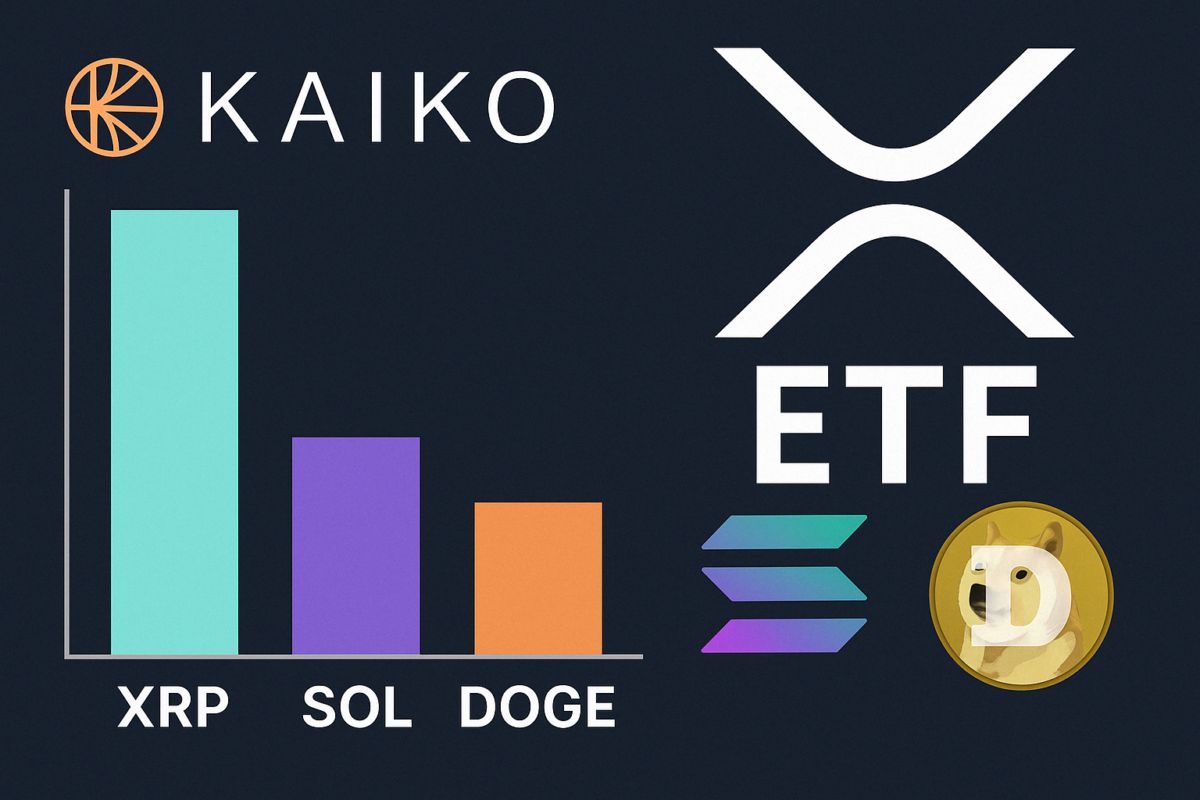GCR: From Fantom to Sonic, Can AC's Return Kickstart the Road to Redemption?
Although the team has inspiring leaders like Andre Cronje and has designed incentive programs and airdrop activities, Sonic's success will depend on the actual execution of these plans and its positioning in the market.
Original Article Title: Will Sonic Start the Fantom Redemption Arc?
Original Source: GCR Research Team
Original Translation: Felix, PANews
Fantom was a major success story in DeFi in 2021, with its TVL reaching as high as $8 billion. However, with the departure of Chief Developer Andre Cronje and the bear market, Fantom lost its former glory. Now, with Cronje's return, Fantom has rebranded as Sonic. This is not just a name change but a fresh start.
This article will explore Sonic's core innovations, market response, and whether it will kick off Fantom's redemption journey.

What is Sonic
Sonic is more than just a new name for Fantom. Sonic Labs CEO Michael Kong has stated that this is a complete reboot. It is a new chain built on new technology, using a brand-new but fully EVM-compatible virtual machine. The team is building a new blockchain from scratch because they couldn't make the changes they wanted to the old one. Kong explained: "You can't rebuild an airplane that's flying. It's much easier to build a new airplane on the ground and then take it into the air."
The new chain will process 10,000 transactions per second, with confirmation times of less than a second. This is much faster than the L2 networks that Sonic aims to compete with. While L2 is gaining popularity, with $34 billion locked in, Sonic believes their model has a fundamental flaw. According to Sonic Labs, these networks survive on money earned from sequencer fees, which in their view should go to developers—the people truly building useful applications. They argue that the value created by application developers is not adequately rewarded.
To address this issue, Sonic puts developers first. Its core feature is that developers can earn up to 90% of the gas fees generated by their applications. Additionally, Sonic will give developers true control over their applications. They can set their fee structures and create a smoother payment experience for users. Everything in Sonic is built around this idea: providing developers with tools and incentives to build better applications. The chain supports languages like Solidity and Vyper, allowing developers to focus on innovation rather than learning new tools.
Sonic is set to launch in December 2024, joining the fast-paced blockchain space alongside Solana, Sui, and Aptos. While it doesn't offer the same level of security as Layer 2 solutions on Ethereum, Sonic provides something unique — the speed of a modern chain using Ethereum familiar tools. This puts Sonic in an interesting position: it's built for developers who need more performance than L2s but want to stick to the Ethereum development environment. Currently, only Sei offers this, with Monad attempting to achieve the same. Therefore, apart from Ethereum L2s, these two chains might be Sonic's main competitors.
How Does the Technology Work?
Sonic Virtual Machine
To overcome the scalability limitations of the EVM, the Sonic Labs team built their own version of the EVM called the Sonic Virtual Machine. SVM is fully EVM-compatible but improves the way code execution is handled. As someone's code runs, the SVM transforms it into a more efficient format on the client-side. It looks for common patterns in the code and replaces them with optimized "super instructions." This makes everything run faster without changing how developers work. All common tools can still work, developers can continue using Solidity and Vyper to write, and the chain still supports Geth 1.4.
Sonic Consensus Mechanism
Sonic uses a Directed Acyclic Graph (DAG)-based consensus mechanism and employs Proof of Stake. Unlike a single-chain where blocks must sequentially follow each other, each validator maintains their own local transaction block set (referred to as a DAG). As transactions come in, validators bundle them into "event blocks" and add them to the DAG.
Before creating a new event block, validators check two things: all transactions in the current block and some transactions they've received from other validators. Then, through a process that doesn't require everything to strictly happen in order, they share these blocks with other validators.

Source: https://docs.soniclabs.com/technology/consensus
Unlike a blockchain, this DAG-based approach doesn't force validators to deal with the current block being built, which would limit transaction speed and finality. Validators can freely create event blocks containing transactions and asynchronously share these blocks with other validators on the network, creating a non-linear transaction record. This enhances transaction speed and efficiency.
When a validator creates an event block, it is propagated to other validators on the network. Once a majority of validators agree on a block, it becomes what is known as the "root event block." These root blocks then join the main chain, which is the final permanent record of all transactions agreed upon by everyone.
The entire process takes less than a second from start to finish. A transaction goes through four steps: first, the user sends the transaction. Then, the validator includes it in an event block. Next, this block propagates until a majority of validators accept it. Finally, it becomes part of the main chain. When you view Sonic through a block explorer, you only see this final main chain. All the intricate work of event blocks in the DAG takes place in the background.
Each validator maintains its own copy of the main chain, which helps them process new blocks more quickly. This creates a clever balance: the DAG structure allows validators to work independently and swiftly, while the main chain ensures everyone ultimately receives the same final record.
Sonic Token
The Sonic (S) token will be a traditional L1 token - used for paying gas fees, participating in governance, and securing the network through staking. At launch, Fantom (FTM) will be convertible to Sonic (S) at a one-to-one ratio. The total token supply will start at 3.175 billion Scoins, matching Fantom's current total supply, with approximately 2.88 billion tokens circulating at launch.
Sonic aims to avoid early inflation of validator rewards. The chain will use the remaining Fantom block rewards to substitute for minting new coins over a period of four years. When half the network is staked, these rewards (approximately 70 million tokens per year) will provide validators with a 3.5% return. After these four years, the network will mint new tokens in each period to maintain the 3.5% reward rate.
Developer Incentives
Sonic has devised multiple plans to leverage its token to attract developers. A 200 million S token Innovation Fund has been established to aid new Sonic-based projects. These tokens will be granted as rewards to developers building innovative applications.
The Fee Monetization Plan alters how transaction fees operate but only applies to approved applications. Regular transactions on Sonic will consume 50% of the fee, with 45% going to validators and 5% being sent to the ecosystem insurance fund. Developers can apply to join the Fee Monetization Plan. If approved, their applications will receive 90% of the fees generated, while validators receive the remaining 10%. This structure allows successful applications to earn sustainable income while supporting network security.
Airdrop
The Sonic project plans to distribute 1.905 billion tokens through an airdrop, rewarding past Fantom users and future Sonic adopters. The team has stated that they have learned from mistakes in previous user incentive activities — the focus is not just to reward large amounts of locked funds but to focus on actual usage. This means that applications that naturally do not require a large TVL (such as DEXes, NFTs, games, etc.) can also benefit from this activity based on user adoption metrics, not just DeFi applications like lending protocols and AMMs that require a large TVL.
Both past significant Fantom events and future participation in Sonic will be rewarded in this airdrop. Past significant events may include providing liquidity, staking, holding staked tokens (such as sFTMx), and NFT usage. Future eligibility criteria may include providing liquidity on Sonic staking, contract deployments, participating in community activities, and bridge usage. The exact criteria are not yet clear, but based on information shared by the Sonic Labs team, it can be assumed that activities beyond passive liquidity provision will receive higher rewards.
Additionally, the "Sonic Boom" plan also allows 30 projects to win additional airdrop allocations to distribute to their users.
Finally, this airdrop includes a novel claiming mechanism with a 270-day vesting period. The system releases 25% of the tokens on the first day, with the remaining 75% as an NFT position. Users can claim the remaining airdrop at any time, but if they redeem early, some tokens will be burned. The longer these unclaimed positions remain, the fewer tokens will be burned upon redemption. Those who want immediate liquidity without token burning can sell their NFT positions on the market.

Source: https://docs.soniclabs.com/funding/airdrop
How Has the Market Reacted?
Since Sonic's release in August 2023, Fantom's token has seen a modest increase. The price has risen from $0.41 to $0.71, a 75% increase, while Bitcoin has risen from around $64,000 to nearly $100,000, a 50% increase. While nothing extraordinary, this is still a good performance as Bitcoin has outperformed many altcoins during the same period. However, it significantly lags behind the best-performing tokens like Sui, whose price has surged 5x from $0.7 to $3.6. Especially after Bitcoin's recent all-time high breakout, Fantom's price has consistently lagged behind other altcoins. This indicates that the market seems to be skeptical of Sonic, and enthusiasm has not yet spiked.
The total value locked in the Fantom Protocol is also not particularly noteworthy. Despite promises of airdrops, the network's TVL remains stable at around $100 million, far below the peak of $8 billion during the last bull market.
When the Sonic mainnet launches, this situation may change, but recent history suggests caution is needed. Other networks (such as Scroll) saw a temporary surge in activity during airdrops, but once the rewards dried up, these funds quickly flowed out. High initial activity or TVL growth at launch may indicate short-term interest rather than sustained adoption.
Future Potential
Sonic finds itself in a crowded field where block space is more abundant than ever before. While Ethereum L2s may not match the speed promised by Sonic, their speed is sufficient to meet current needs. Therefore, most Solidity developers choose to build on these L2s, while other L1 networks struggle to attract builders and users. Sonic will face similar challenges.
The team emphasizes rewarding developers through gas fee sharing, but this approach also faces its own obstacles. History has shown that this may not be the eye-catching feature Sonic hopes to achieve. Major applications like Uniswap, Aave, and Raydium have built successful businesses without gas refunds. NEAR Protocol attempted a similar approach with little success, ultimately regaining momentum not through developer incentives, but through its focus on AI applications. The anticipated low transaction fees of Sonic make this challenge even more complex, reducing the value of gas refunds.
For Sonic to achieve long-term success, it needs to attract applications with its outstanding speed and scalability. Think of current DeFi protocols, perpetual DEXs, DePIN networks, and complex financial applications. The elements to achieve this goal are in place—a significant amount of development and incentive capital, a well-designed incentive plan, and one of the most inspiring leaders in DeFi, Andre Cronje. The team seems to understand this, and Andre Cronje is actively seeking partnerships with credit card companies and international banks.
Merely becoming another high-speed blockchain host for Memecoin casinos does not guarantee lasting success. While such activity may provide early momentum, Sonic needs to establish itself in a clear niche market, where its performance is paramount. From the team's carefully designed incentive activities and airdrops to institutional expansion, the team has some hope. But to succeed in this competitive environment, more than just good intentions are needed. Sonic's future depends on translating these plans into action to demonstrate the true value of its high-performance infrastructure.
Disclaimer: The content of this article solely reflects the author's opinion and does not represent the platform in any capacity. This article is not intended to serve as a reference for making investment decisions.
You may also like
XRP Gains Edge in ETF Race Over SOL and DOGE, Says Kaiko

Strive Pushes Intuit to Add Bitcoin to Treasury
Strive urges Intuit to hold Bitcoin in its treasury to hedge against AI-driven disruption risks.Bitcoin as a Hedge Against AI Disruption?Why Bitcoin, and Why Now?BTC in the Boardroom

JP Morgan Predicts Imminent Interest Rate Cuts
JP Morgan forecasts upcoming rate cuts, signaling a major shift in U.S. economic policy that could impact markets and crypto alike.JP Morgan Signals Upcoming Interest Rate CutsWhy Rate Cuts Matter for MarketsCrypto Could See Renewed Interest

Raydium launches Launch Lab, a token issuance platform
